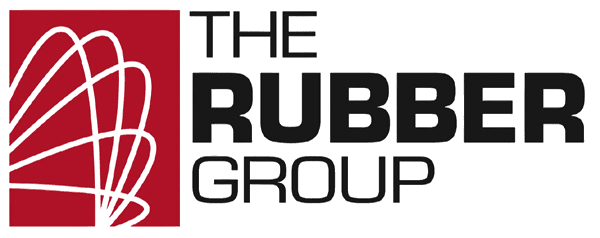Do you need to reduce tooling costs for molded rubber products? Then it may be time to review your part designs and find some areas for improvement. After all, design for manufacturing (DFM) isn’t just about material selection or the rubber molding process. DFM also means finding ways to improve part designs so that your molds are less expensive to produce.
Contact The Rubber Group for design aid that’s backed by expert molding services and high-quality tooling. When you work with us, we’ll share cost-saving ideas like the ones you’ll read about in this article. Whether you need standard molded rubber parts or custom molded rubber parts, we can help.
Use Correct Tolerances
Tolerances are allowable variations in size for molded rubber parts. The Association for Rubber Products Manufacturers (ARPM) organizes these variations into drawing designations with alphanumeric classes. Because higher-precision parts require molds that are more expensive to produce, you’ll have greater capital outlays for tooling if you specify a drawing designation of A2 (precision) or A1 (high precision). Unless you need this level of precision, a less expensive commercial tolerance (A3) or even a basic tolerance (A4) may be appropriate to help limit tooling costs.
Avoid Excessive Undercuts
Undercuts are protrusions or indentations that can complicate the release of molded products. Because rubber is more flexible than plastic, designers don’t face the same challenges as with injection molded plastic, which is more rigid and less forgiving. Yet, excessive undercuts in molded rubber products may require the use of side actions, features that are designed into the mold to help facilitate part ejection but that also increase tooling costs and can add complexity to mold maintenance.
Consider Part Size and Mold Size
Larger parts require larger, more expensive molds. If you can reduce the size of your part, you’ll probably reduce your tooling costs. Remember, however, that there’s more to the mold than just the core and the cavity. With rubber injection molding, your part needs to fit inside the mold while leaving enough space for sprues, runners, tear trims, overflows, and alignment pins. All of these features are important, so consider the size of the part that you need and the size of the mold to produce it.
Account for Part Appearance
Molded rubber parts with a superior appearance are usually more expensive to produce. That’s because processes like bead blasting, electrical discharge machining (EDM), and mold polishing add costs. Some finer mold finishes even require hand labor. Unless your molded rubber part requires a special cosmetic appearance, avoid specifying a fine finish for the machined mold. Textured part surfaces and features such as logos also add costs to projects.
Define Flash Requirements
Flash is excess rubber on injection, compression, or transfer molded products. It is a normal part of the molding process that needs to be controlled for your individual application. When defining your flash requirements, there are two measurements to consider. Flash extension projects from the part along the mold’s parting line. Flash thickness is measured perpendicular to the parting line instead.
Consider the amount of flash your application will tolerate because reducing the allowable flash extension and thickness can dramatically increase both mold cost and part cost. If your flash removal requirements are strict, you can specify a flash-less mold so that your rubber parts do not have excess material in the first place. Flash-less molds can double or even triple your mold costs, so define your flash requirements carefully. A rubber molder can also hand trim your parts or use cryogenic deflashing, a batch process.
Evaluate Family Molds
Family molds produce different rubber parts that are made of the same elastomer. They have more than one cavity and effectively reduce tooling costs by improving productivity. For example, let’s say you need to mold two silicone parts for an assembly. Producing a separate single-cavity mold for each part would add 30% to 60% to your capital investment. Moreover, these molded parts would be priced based on running them in a single cavity.
If you use a family mold instead, your tooling costs will be less and your parts will be priced as if they were produced in two-cavity mold. This cost savings is attractive, but there are some other considerations as well. For example, family molds add complexity if the different parts in the mold have different quantities or are so close in design or size that there’s a risk of mixed parts packaging. The rubber parts in a family mold must also be made of the same material and have similar sizes and processing times.
Calculate the Number of Cavities
Multi-cavity molds have multiple cavities that all produce the same part. The benefits include increased cycle time efficiency and higher production volumes. To determine the optimum number of cavities for your molding project, it’s important to balance the capital outlay from your tooling costs against your per-part costs. Sharing the projected annual demand and product life expectancy with The Rubber Group will enable us to calculate the return on investment (ROI) for a larger mold with a higher number of cavities.
Contact The Rubber Group to Learn More
Are you looking for ways to reduce tooling costs for molded rubber products? Improving your part designs could hold the key to savings. This article describes just some of the ways that The Rubber Group can help. Whether you need standard or custom molded rubber parts, we add value to molding projects and are committed to quality in all that we do. Contact us to learn more.
